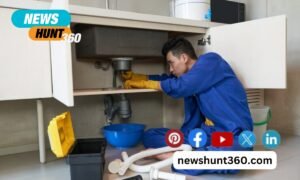Steel is an essential part of modern life and modern economies. There are many ways steel production and usage can be adjusted to be environmentally friendly. Here are five facts about environmentally friendly steel.
1. Tempered Steel Has A Long Lifespan and High Resource Efficiency
One of the most effective and useful methods of making steel is tempering steel. This is the process of heating the steel to the critical temperature and then quickly cooling it. Heating and cooling may be performed once or several times, depending on the type of steel you’re making or the type of product it’s being used for. Tempered steel is more elastic and less brittle than non-tempered steel, which means it’s more durable and therefore has a much longer lifespan. These batches of steel are less likely to corrode or warp, for example. Products with longer lifespans get thrown out and recycled less often, which contributes to the higher resource efficiency of tempered and cold-formed steel. In addition, this durability means your steel is less likely to require repairs or replacements, which also contributes to resource efficiency.
2. There Are Steel Industry Sustainability Efforts
The steel industry has many efforts geared toward environmental sustainability, as well as toward economic and social sustainability. Many of these sustainability efforts include improving the energy efficiency and environmental cleanliness of its industrial processes. In the United States, for example, electric arc furnaces are the most often used furnaces in steel production, with more modern types of fuel sources using renewable energy now being implemented. They greatly reduce the American steel industry’s carbon footprint. The American steel industry also makes an effort to use high-quality iron in its steel production, in the form of iron ore pellets. These pellets emit much smaller amounts of greenhouse gases than other sources, such as sintered iron.
3. Steel Is Continuously Recyclable
Steel is one of the types of material that can be recycled continuously. Not only can some of the processes used to create steel be adapted to become greener, but the steel itself can typically be recycled into new steel products when it’s finished its current use. In recent years, steel has become the number one most recycled material in the world. This holistic approach to the lifecycle of steel and steel products can greatly reduce the environmental impact of the steel industry. When you recycle steel instead of creating new steel, you can cut industrial emissions and conserve more energy.
4. Steel Can Support Green Constructions
Because steel is so integral to most industries, consumer products and constructions, it can be leveraged to support green initiatives in industries and construction. For example, steel can support large amounts of weight, so it can be used to support rooftop terraces and greenhouses in urban areas. These constructions can help better insulate buildings, prevent water runoff and help reduce the heat island effect. However, all these benefits come at the cost of these structures and the organic matter they house being incredibly heavy. Steel can ensure you can install one of these structures without risking the integrity of your building.
5. Steel Is Part Of The Circular Economy
Steel is considered part of the circular economy mainly due to its continuous recyclability. Not only is the steel itself fully recyclable, but its byproducts can be recycled as well. All products and byproducts of the steel industry, when processed properly, can be used and reused in a continuous loop. The main benefit of steel being part of the circular economy is that it’s also the underpinning of a large part of the world economy. If the steel industry becomes greener and more environmentally friendly, then the hope is that all of the industries that are related to or that benefit from steel will follow along and become more environmentally friendly too.
Steel is already an environmentally friendly material. There are several methods of creating steel that are safe for the environment, as well as many ways existing steel can be leveraged to support other environmental and green efforts.




